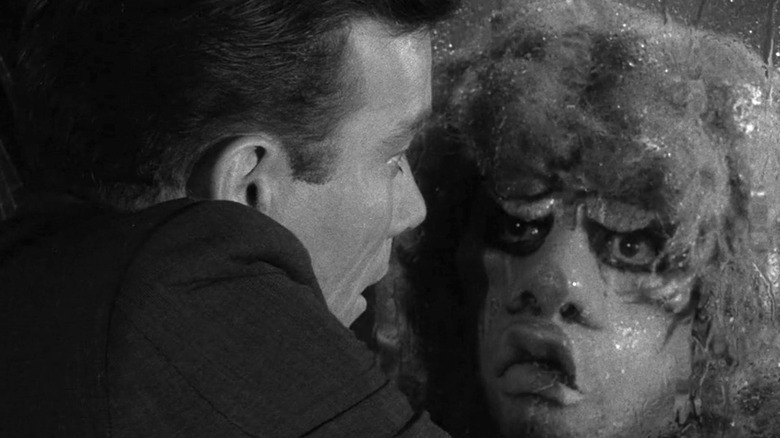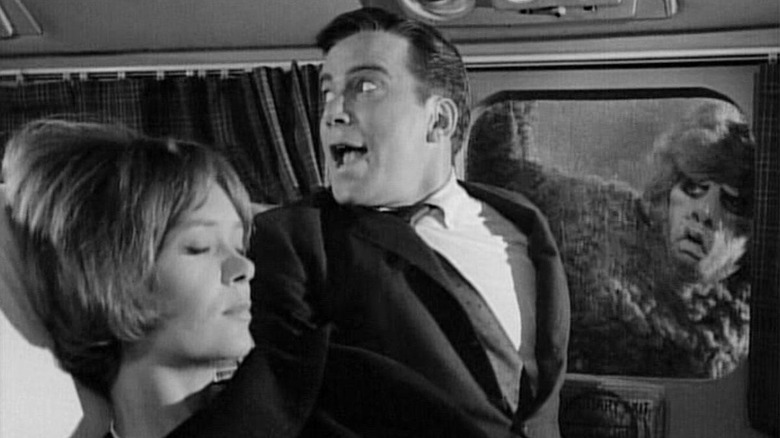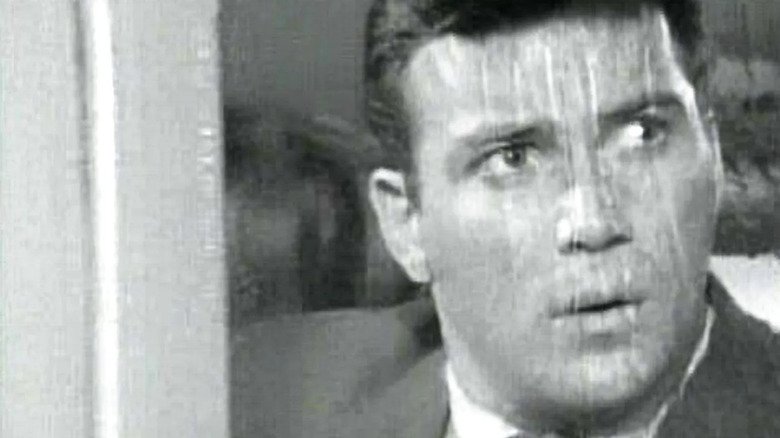Why Filming Twilight Zone Had William Shatner Feeling Claustrophobic
"The Twilight Zone" was a science fiction anthology series that began airing in 1959, with episodes from the "fifth dimension" that existed between light and shadow, between science and superstition. The series was created by Rod Serling, who also served as the show's host and narrator. Each episode would present some type of unusual, "otherworldly" situation just beyond the realm of reality and often present some sort of moral dilemma.
The series would win three Emmys, create an iconic theme song, and leave an imprint in film and television that can still be seen today in anthology series like "Black Mirror" and the twist endings loved by M. Night Shyamalan. In the series' fifth and final season, one of the most famous episodes would air, striking a nerve with audiences and seeming all too real to its star. After "Nightmare at 20,000 Feet" aired, star William Shatner agreed that making it felt all too claustrophobic.
'Things were done so strangely'
In "The Twilight Zone's" final season, noted sci-fi writer Richard Matheson adapted his short story "Nightmare at 20,000 Feet" for the season's third episode. The episode deftly preys on fears that stem from a relatively new technology at the time, commercial airline travel.
The episode starred William Shatner as Robert Wilson, an airline passenger who believes he sees a mysterious creature on the wing of the plane. Because he'd previously suffered a nervous breakdown on a plane, Wilson questions (along with the audience) if what he's seeing is real. With each appearance of the creature, Wilson's paranoia grows, until it overtakes the possibility of a creature on the wing as the true terror in the episode.
The theme of the episode is paranoia and claustrophobia. According to Shatner, art imitated life as the shooting of the episode itself was claustrophobic. Because the episode was filmed in an actual airplane, the set was confining. In an interview with the Television Academy Foundation, Shatner explained that the crew clamored over the actors and the camera was in a fixed position, making him feel "pinned to the seats."
Shatner blamed the conditions on television production being relatively new, saying "things were done so strangely because they didn't have any knowledge back in those days." But in "The Twilight Zone" fashion, the production wasn't dealing with just the dimension of physical space, but also the dimension of time.
They were forced to film all night
"Nightmare at 20,000 Feet" was directed by the legendary Richard Donner, who took audiences on a journey in the episode. He highlights Wilson's descent into madness with tight shots, canted and overhead angles, exterior shots through the elements, the occasional jump scare, and a jarring soundtrack. It creates an ominous feel as viewers watch a man loses his grip on reality.
Not only was physical space restrictive, but the production team also found themselves cramped for time. According to Donner, the entire production was moved up an entire day because MGM Studios needed the set for a feature film. Donner recalled:
"Close to the end of the second day the producer came on the set and he said, 'I think you have a little problem' and I said, 'what's the problem?' and he said, 'MGM wants the set, they need it for a feature.'...we ended up shooting all night until the sun came up and the feature crew came in to take over from us."
Shatner prefers to call the episode a psychological drama rather than science fiction, and he might be right. The episode is painfully relatable. As Robert Wilson's paranoia grows, so does his frustration, realizing that no one is listening to him. It is a feeling we can all relate to at some point in our lives.
As the episode concludes with the plane landing and Wilson being carried away on a stretcher, the audience is teased with a shot of a damaged wing on the plane. So was the madness real, or was there a creature on the wing? Shatner isn't saying, leaving it up to the audience's interpretation. He calls the episode "A figment of some guy's imagination ... or not."


